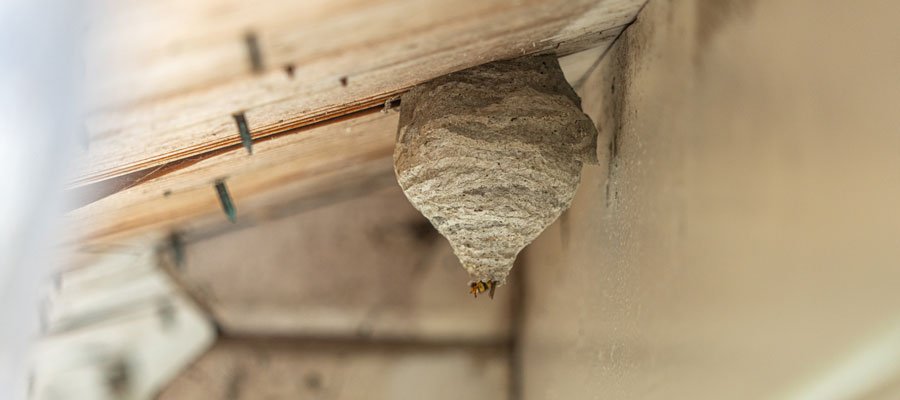
Pest Control Guide to Wasps
Wasps
These aggressive little carnivores have a fearless demeanour and infamous sting. They begin to appear in spring when the temperatures increase but become far more prominent in late summer because of both nest growth and also a switch towards more glucose-based diets; the latter brings them more commonly in contact with humans as we enjoy our fizzy drinks and ice-creams in the summer sun.
DIY removal is never recommended, as a threat to the nest will provoke a defence response that can result in painful consequence. Luckily, professional removal is low-cost, safe and 100% guaranteed.
Dangers of wasps:
Wasps can be very aggressive if they believe they, their nest, or queen is at threat. When attacking the females will release their stingers, striking multiple times, while also emitting a pheromone which prompts any nearby wasps to attack. Their stings are painful, itchy and in some cases cause severe allergic reactions and anaphylaxis.
Appearance:
Wasps and honey bees can often be mistaken. Honey bees tend to have a fury golden brown look and are rounder. Whereas wasps are a more pronounced/vibrant yellow and are more elongated at about 12 to 17mm in length.
How do you know if you have a wasp nest:
If you’re seeing an unusual amount of wasps in or around the house then its possible you have a nest. These can be within the wall cavity, attic, fascia, overgrowth, ground or shed. What you should look out for is a consistent flight path, are the wasps flying to a point at your house or garden and disappearing inside? or are they just appearing around a sweet scented plant? if its the former, then there’s likely a wasp nest in your home.
Lifecycle of a wasp:
Queen wasps and males mate during the autumn period and then males and sterile females die off during the colder winter period. Queens survive the winter to re-emerge in the spring to build their nests and lay eggs. While the nest is never the same, some sites can be perfect for multiple nests.
How to get rid of wasps:
To destroy a colony of wasps you must remove/kill the queen. Killing stray wasps will have no effect. As the queen is often deep within the nest, the nest needs to be injected with deep penetrating pesticide or removed completely. It is never recommended you try to accomplish this without specialist protective clothing. Wasps attack and release pheromones to encourage others to attack when their nest is at threat, so be aware of these dangers.
Professional wasp nest removal:
We guarantee success on all wasp nest treatments, with no possibility of the wasp nest ever redeveloping. Treatment takes less than 30 minutes, is safe, and incredibly affordable. In cases where nests are visible and accessible, all remnants of the nest will be completely removed, leaving no trace of their presence. In instances where they are imbedded within an inaccessible site, the nest can be injected with specialised products which will destroy the nest and queen quickly. We have a solution to all wasps nests, regardless of location.
How to tell the difference between bees and wasps:
On the left of the above picture is a yellow jacket wasp. Notice it’s bright yellow markings, elongated body the smoothness of the body; these are the distinguishing features of the wasp. On the right is a honeybee, notice its a little chubbier or more condensed in form, it’s golden to dark markings (not yellow) and the presence of far more hairs (people often describe them as fuzzy).
Swarms:
Wasps don’t swarm either. They may attack in groups when under threat, but they do not swarm. If you spot a large swarm, you are likely looking at honeybees. Swarming is natural part of honeybee cycles, in which they split from their current hive in search of new homes. A swarm will usually resolve itself by leaving for a new home once its been located by the swarms ‘scout bees’. This process can happen in as little as 15 minutes, but may take a couple of days. Swarms which have settled on a building or tree should be left alone, and should pose no threat if given space. If it does not disperse within 3 days, consider contacting a local beekeeper, who will likely be delighted to collect some free bees!
Get Expert Help.
Our team of experts is ready to provide advice, offer a free no-obligation quote, and be at your location ASAP. Get in touch today to rid your home or business of pesky wasps!
Why Choose Us?
Licensed & insured exterminator experts ✔
Get rid of wasps permanently ✔
Success guaranteed ✔
Same-day service ✔

